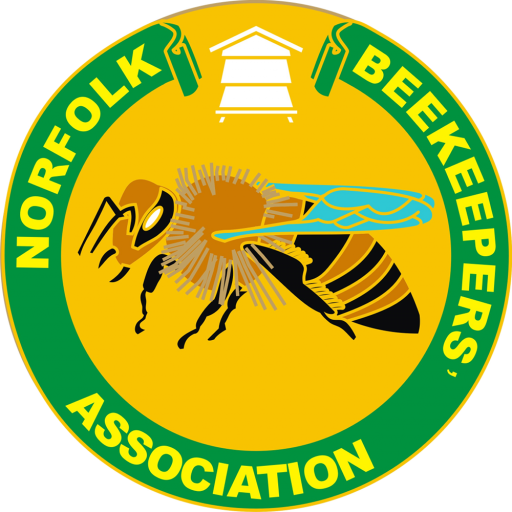Much of the work to be carried out in June and July follows a similar pattern to May, with regular inspections for swarm control, checking brood for any signs of abnormalities. European Foul Brood has again occurred in Norfolk and North Suffolk, with the main findings south of Norwich, but no one should be complacent. It only takes one beekeeper to move diseased colonies to a new site or pollination and what was a ‘clear area’ no longer is so. Any signs of disease should be investigated. If you are not sure what your problem is, seek advice and / or help. Either contact the Regional Bee Inspector,
one of the Seasonal Bee Inspectors, or discuss the problem with the NBKA.
If early honey has been removed then a check on available stores is very important, or starvation can quickly occur – feed if necessary.
When visiting the apiary check the ground near the hives for signs of bees with deformed wings crawling in the grass – a sure sign that Varroa numbers are increasing. It is better to take action at an early stage because colony collapse is always a possibility. If only 2 – 3 stocks are involved and you have mesh floors to hand, remove the close-off sheet and dust fairly generously with icing sugar. A honey jar with a fair number of 1 mm holes punched in the lid makes an adequate emergency sprinkler. One hive per day can be done, moving a single floor to the next stock and repeating the process.
Any old or deformed combs can be moved to the outside of the broodnest with a view to removing them next spring. If any combs go mouldy as the outside ones sometimes do, it may as well be those that are to be replaced.
hen the weather is good with bees working well, the time is right to put in the broodchamber one frame with drone base foundation, as part of integrated pest management. When the bees have built out the comb and the brood cells are capped which may take two to three weeks, it is essential that it is then removed before the drones hatch – along with several hundreds of varroa mites. Alternatively, a shallow frame can be used, hoping the bees will build drone cells on the lower edge. This is then removed when the drone cells are sealed. These combs should not be allowed to hatch as this will be counter-productive and increase the varroa mite population.
Thought should be given to replacing old or poor queens. If a queen is to be introduced, best results are obtained if she is given during a nectar flow. A queen introduced when times are hard for the bees makes for uncertain acceptance of a new queen. Better delay for a week or so rather than have a lovely young queen, full of promise, killed because of bad timing.
Finally, long grass growing in front of the hive not only restricts the flight path but also annoys the bees when it is blowing side to side across the entrance, and when cut helps to keep the hive dry and the site tidy.
